It is abundantly clear today that the procurement team or function of any business needs to play a strategic role rather than an operational role.
Procurement teams delivering a strategic role report (2.4X) higher ROI than teams without.
In this article, we’ll delve into 5 key elements that most procurement strategies would benefit from.
What is a procurement strategy?
In simple terms, a procurement strategy is the plan created and used by a business to manage its procurement processes.
It outlines the approach and methods that will be used to acquire the goods, services, and works it needs to achieve its business objectives.
Now let’s talk about 5 key elements that you should consider to craft a winning procurement strategy.
1. Supplier Performance Management (SPM)
Suppliers’ performance management, also known as SPM, is a strategic approach to managing and improving suppliers’ performance.
It involves evaluating and overseeing a supplier’s operations to ensure they provide maximum value to the company.
Good SPM allows a company to:
- Enhance performance and increase reliability of suppliers
- Reduce supplier risk and the impact from supply chain disruptions
- Get better prices
- Improve quality and standards of compliance
How to Implement SPM?
Now, let’s talk about how to implement SPM in your supply chain. Here are the steps to get started:
Step 1: Segment Suppliers and Use Filters
You have suppliers of varying importance to your company. The suppliers that are critical, those that are important and the ones that do not make a significant impact.
Check out below link for more information on identifying key suppliers.
Key Suppliers | Identify & Manage Key Vendors & Suppliers
Identifying, monitoring, and managing key suppliers can help your business reduce risk, save money, and foster innovation.
Step 2: Define Performance Measures
To effectively manage suppliers, you need to establish clear and measurable performance measures.
Common metrics include delivery performance, quality standards, regulatory compliance, and cost-effectiveness.
You can explore more about supplier performance measures below.
What are supplier performance measures? | ADR International
ADR International
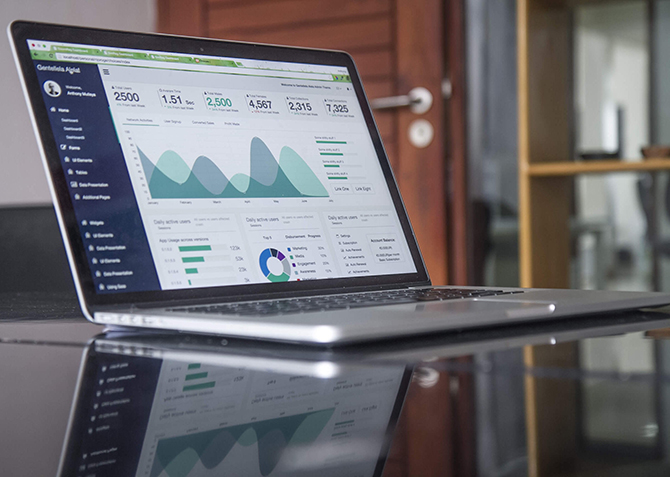
Step 3: Maintain a Supplier Scorecard
Create a supplier scorecard to track and evaluate supplier performance based on the defined metrics. This should be a dynamic document that you update regularly with the latest performance data.
Step 4: Conduct Regular Performance Reviews
Schedule regular performance reviews with your critical suppliers. Discuss their performance, address any issues, and explore opportunities for improvement. The data from the scorecard will be valuable during these discussions.
Step 5: Negotiate Better Terms
Utilize the insights and data obtained through SPM to negotiate improved terms with your suppliers.
Identify areas where they need to enhance their performance and propose mutually beneficial changes to the contracts.
For tips on negotiating better payment terms, check out the below link.
7 Tips for Negotiating Better Payment Terms With Your Suppliers
One of the most effective ways to improve your cash flow is to lengthen your payment terms with vendors and suppliers. Learn how to do it.
<h2 id="2-technology-and-automation”>2. technology and Automation
Various processes of the procurement process are manual, slow, error-prone and also costly. Automation becomes a game-changer here.
By leveraging technology, businesses can automate repetitive and time-consuming tasks and free up valuable human resources for more strategic tasks.
This leads to faster turnaround times, improved accuracy, and a more efficient procurement process.
Procurement automation software like Nanonets streamline various parts of the procurement process and make it more streamlined.
Below are the key components of a procurement process automated with software.
Optical Character Recognition & Intelligent Document Processing

By automating data entry and extraction, OCR reduces human error and speeds up information processing. This is particularly important when handling complex procurement documents like invoices, purchase orders, and shipping manifests.
Workflow Automation and Integrations
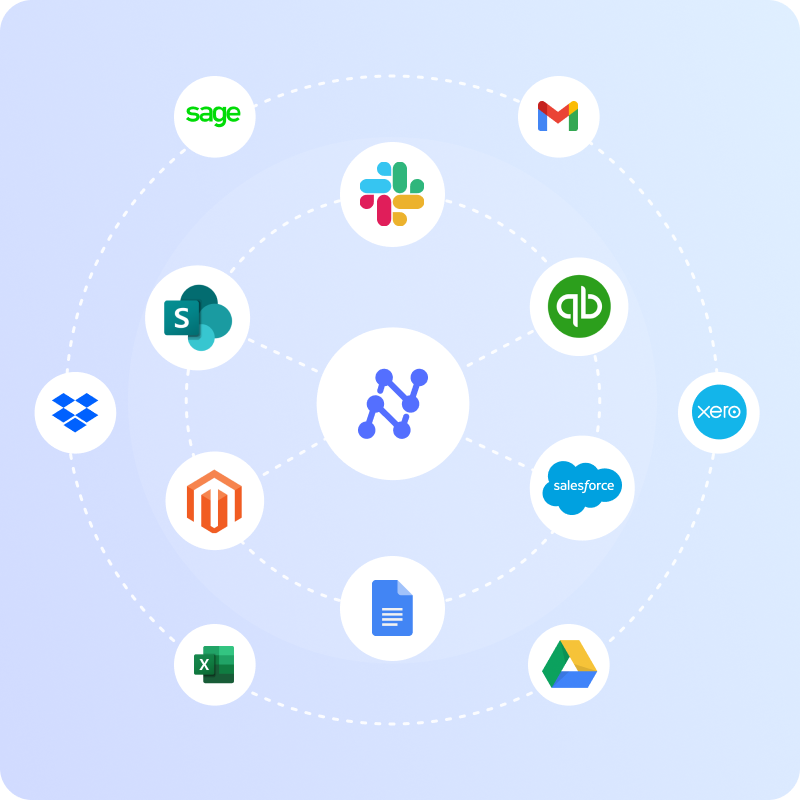
Workflow automation streamlines the flow of tasks and information between different apps and databases. This ensures smooth operations and real-time visibility throughout the supply chain.
Accounts Payable (AP) Automation and Invoice Matching

AP automation simplifies the entire accounts payable process, from receiving invoices to making payments.
Firstly, this technology automates invoice capture, approval workflows, and payment processing, significantly cutting down processing times and errors.
Secondly, invoice matching is a vital part of AP automation, ensuring accurate matching of invoices with purchase orders and receiving documents, preventing discrepancies and fraud.
Thirdly, integrating AP automation with accounting software ensures seamless data flow, improving accuracy and efficiency in financial management.
Here’s what a typical procurement workflow looks like when automated using procurement automation software like Nanonets:
The whole thing kicks off when someone needs to make a new purchase.
Purchase Request:
An employee logs into the Nanonets portal and submits a purchase request online.
Purchase Order Creation:
Nanonets takes care of creating a Purchase Order (PO) automatically based on the details provided in the request.
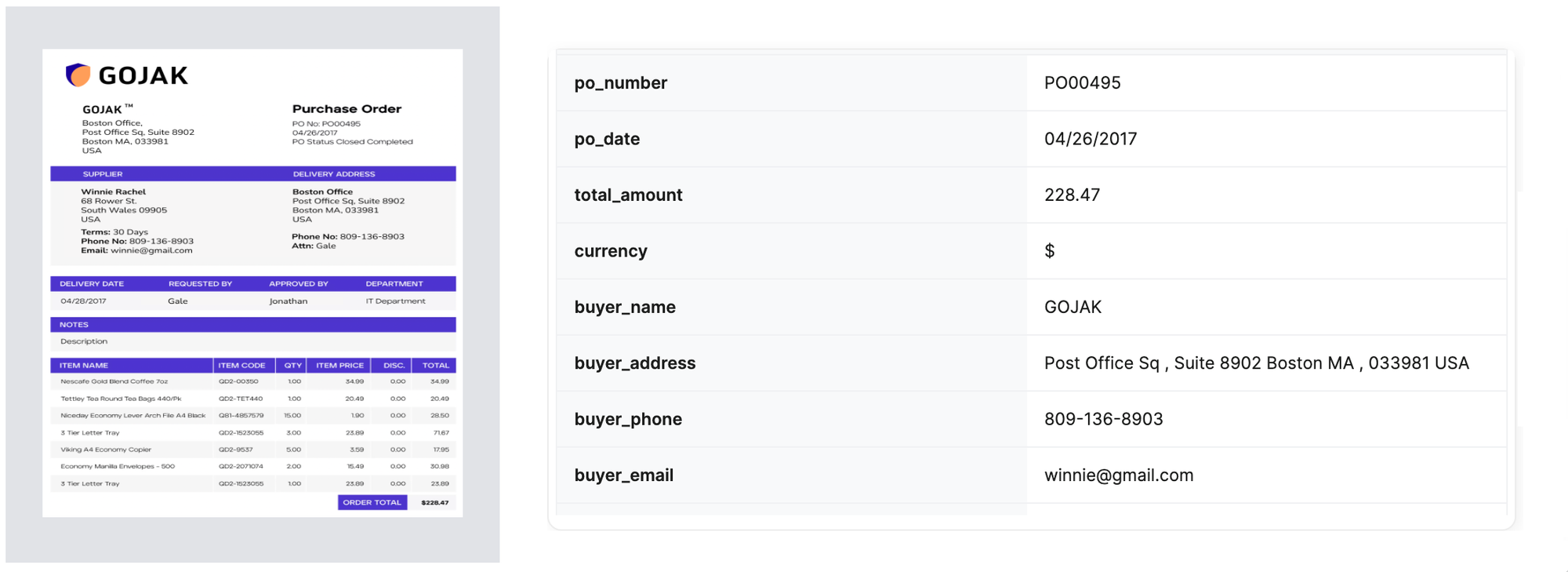
Purchase Order Approval:
The PO goes through an automated approval process within Nanonets.
You can set up predefined rules and conditions to make sure that all procurement activities are consistent, which helps prevent errors and unauthorized spending.
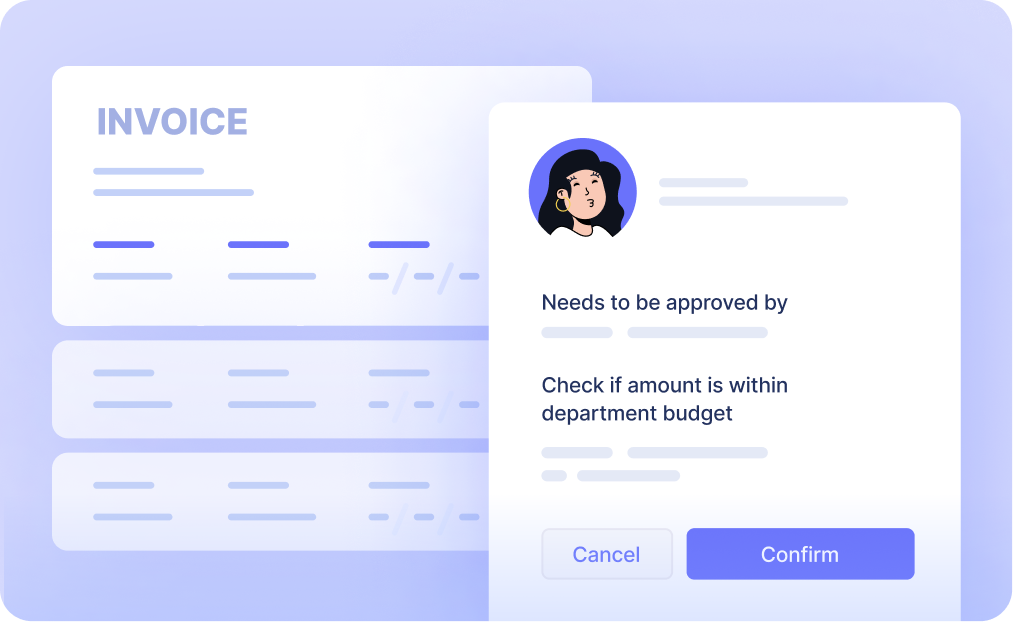
Approval notifications are easily sent and managed through popular communication tools like Slack and Microsoft Teams. They even come with direct Call To Actions (CTAs) to help with quick decision-making.
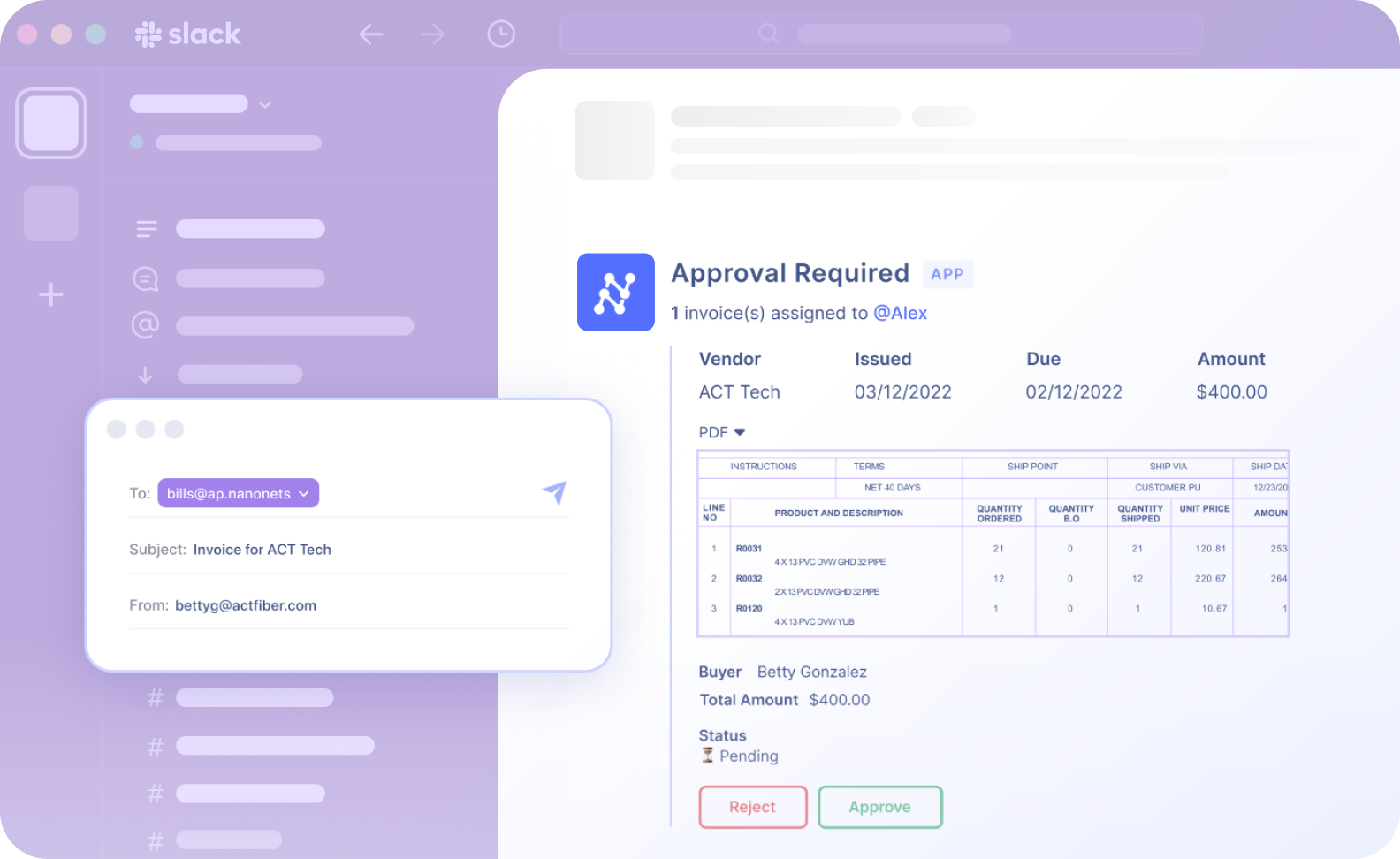
Purchase Order Dispatch:
Once the PO is approved, the system automatically sends it to the supplier through email or supplier portals like SAP Ariba or Coupa.
Goods or Services Delivery:
The supplier takes care of processing the order and updates the delivery status in the supplier portal, which syncs with Nanonets.
Invoice Data Capture and Matching:
Nanonets automatically extracts data from invoices, purchase orders, and delivery notes, which cuts down on manual data entry and reduces errors.
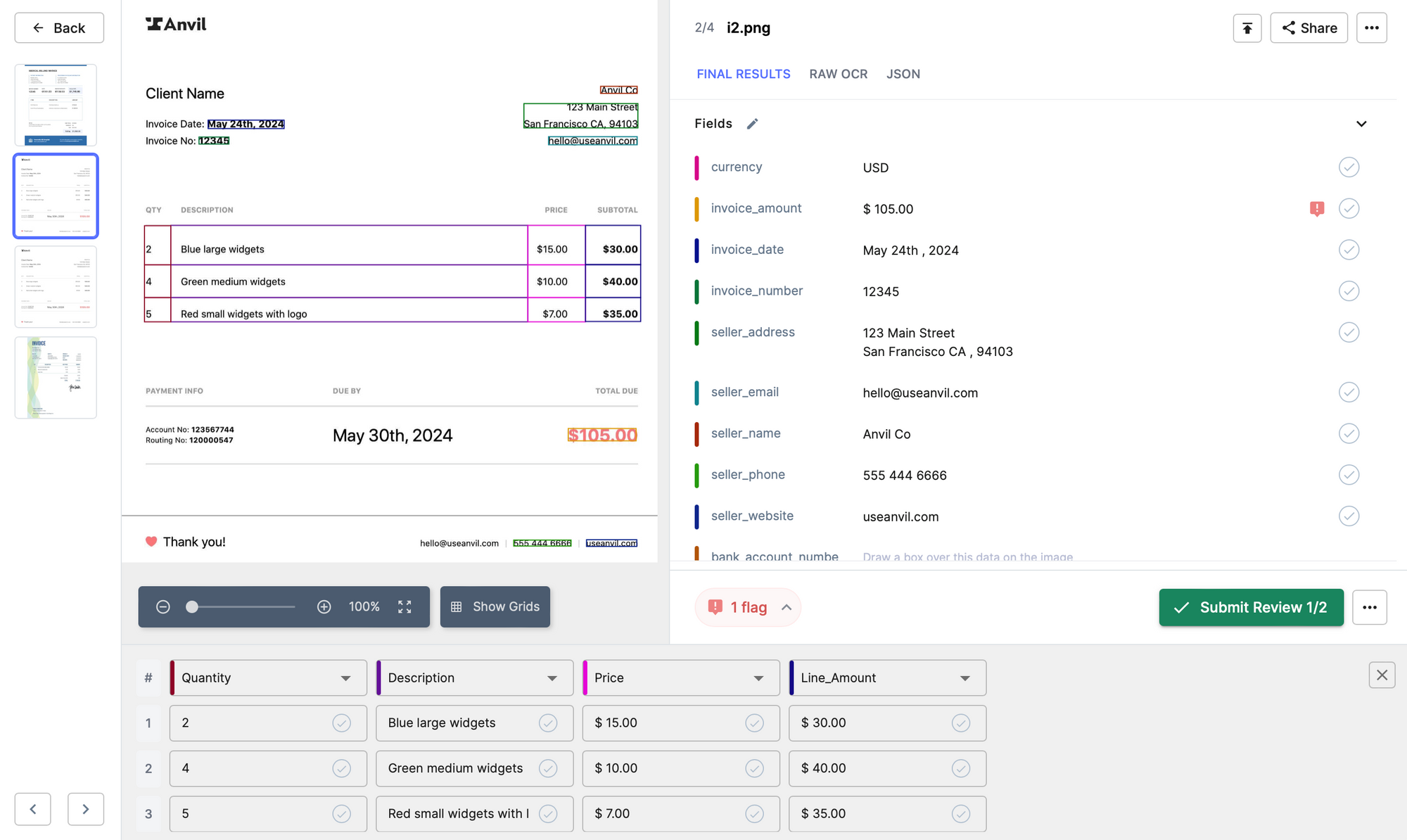
Automated three-way matching makes sure everything is accurate by verifying that the invoices, purchase orders, and delivery notes all line up before processing payments.
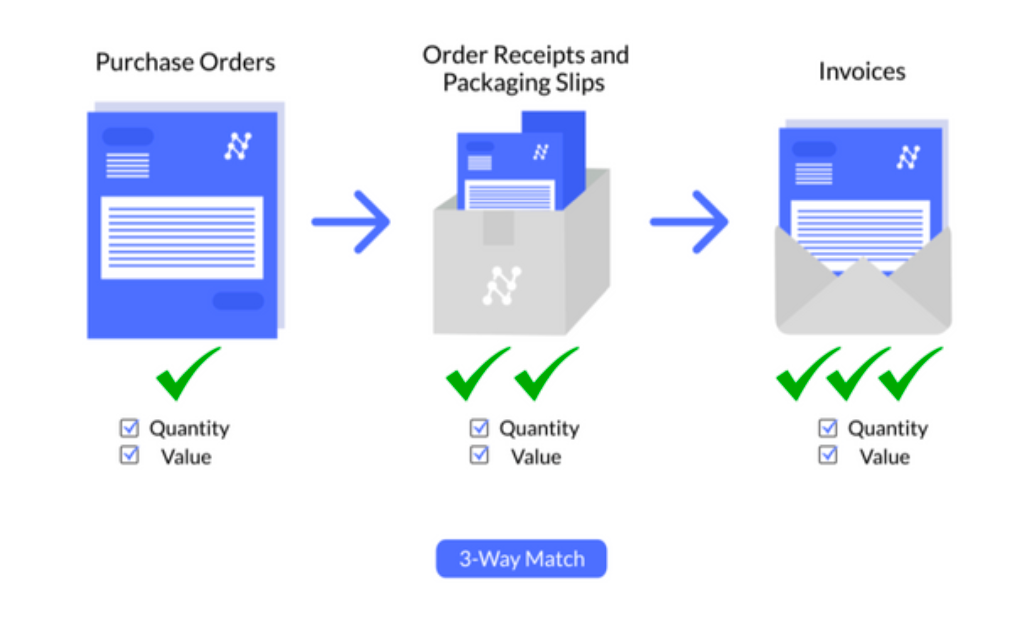
Payment Processing:
Nanonets streamlines the payment process, making sure all transactions are done efficiently and on time.
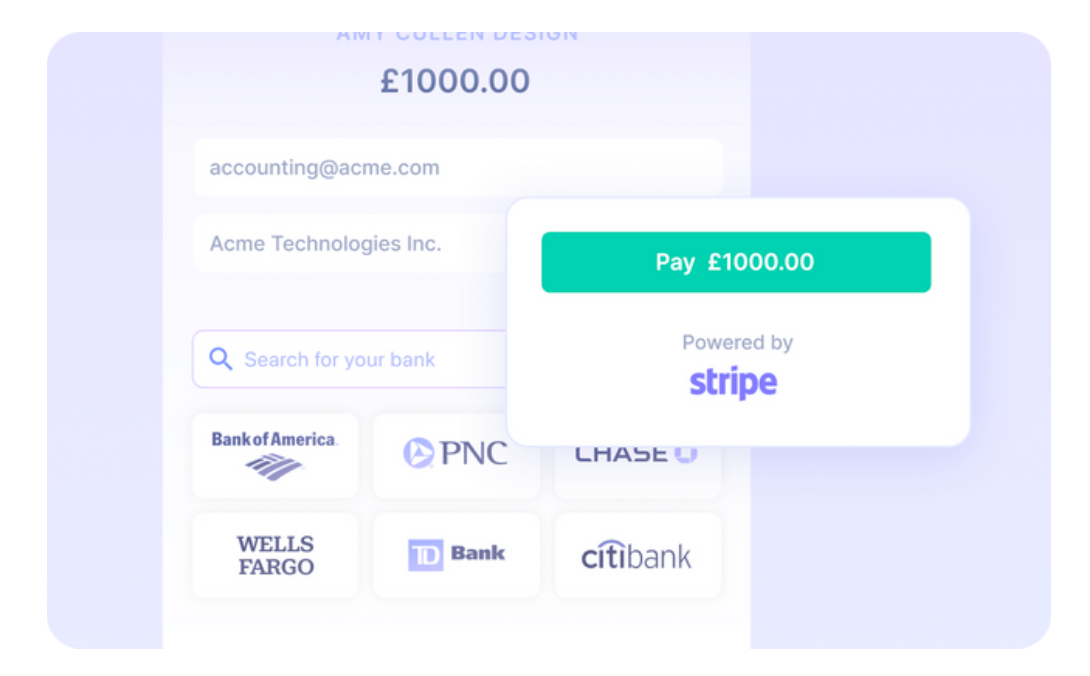
This helps maintain good relationships with suppliers and avoids late payment penalties.
Integration with ERP/Accounting Software:
Nanonets seamlessly integrates with various ERP and accounting systems, providing a unified experience for managing procurement and financial data.
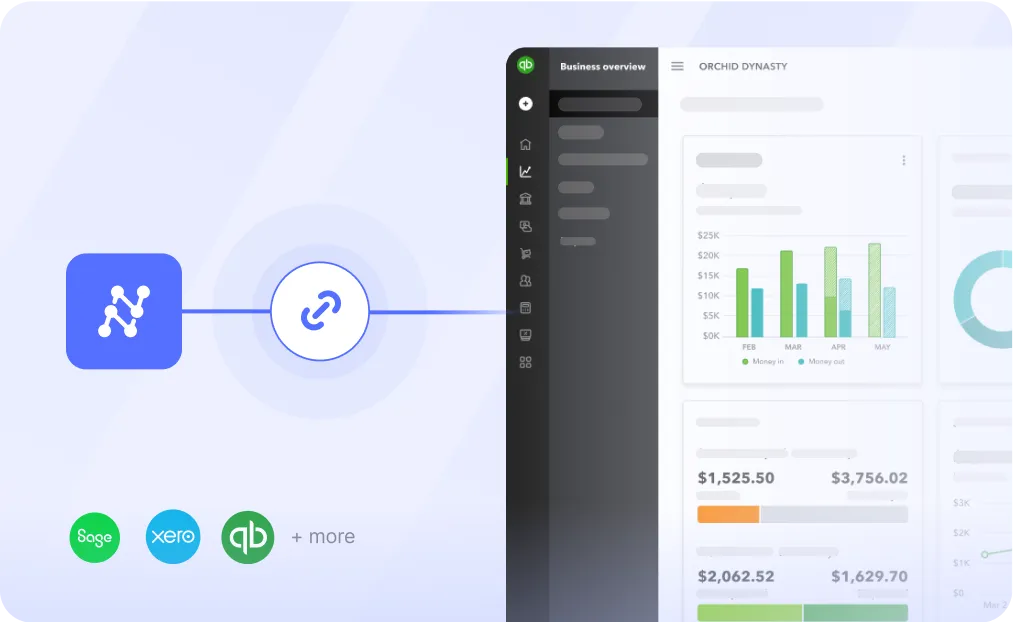
It’s clear that automating the procurement process with Nanonets streamlines purchasing and boosts the performance of your business.
Here are some common benefits you’ll see when you automate the procurement process:
- Cost Reduction: Automating repetitive tasks cuts down on labor costs and minimizes errors.
- Efficiency Gains: Streamlining approval and invoice processing workflows speeds up the procurement process.
- Compliance Improvement: Automated checks and balances ensure adherence to procurement policies and standards.
- Supplier Relationship Management: Automated systems enhance communication and coordination with suppliers.
3. Spend Analysis and Optimization
It is imperative to be strategic about spends involved with procurement. If you have strong analytics around your procurement spends, it allows you to –
- have complete visibility into areas where procurement spends are being made.
- set expense policies for spend control.
- benchmark your procurement spends against industry standards for seeking further cost savings.
- perform strategic budgeting and implement it easily.
Step 1: Data Collection and Consolidation
To begin, gather data from various sources, including purchase orders, invoices, contracts, and payment records. Consolidate this data into a central repository to ensure a comprehensive view of all procurement activities.
An automated system like Nanonets helps you do this instantly.
Step 2: Classification and Categorization
Expense categorization helps in identifying patterns and trends in procurement spends. Advanced analytics tools can automate this process, ensuring consistency and reducing manual errors.
We have a detailed blog resource about business expense categories, how to categorize them for clarity & tax benefits, and automation tools for expense categorization. Read it below.
How to Categorize Business Expenses?
Learn about business expense categories, how to categorize them for clarity & tax benefits, and automation tools for expense categorization.

Step 3: Spend Analysis
With the data categorized, perform a detailed spend analysis to identify opportunities for cost savings and efficiency improvements.
Key areas to focus on include:
- Supplier Consolidation: Identify opportunities to negotiate better pricing and terms with suppliers.
- Category Management: Analyze spends by category to understand where the most money is being spent and identify areas for bulk purchasing or long-term contracts.
- Compliance and Maverick Spending: Ensure that all procurement activities comply with organizational policies and reduce maverick spending (unauthorized or off-contract purchases).
Step 4: Benchmarking
Benchmark your procurement spends against industry standards to identify areas where your organization can improve.
This involves comparing your spend data with that of similar businesses or of similar goods / services to find cost-saving opportunities, and maybe even discover specific best practices for procuring these elements
Benchmarking will help set realistic and achievable targets for cost savings.
Step 5: Strategic Sourcing and Budgeting
Based on the insights gained from spend analysis and benchmarking, develop strategic sourcing plans that focus on high-value categories and suppliers.
Read our detailed guide on how to create an effective expense policy for your business below.
Sample Employee Business Expense Policy Template
Use our Employee Business Expense Policy template to design an ideal expense policy ensuring financial control and compliance for your business.
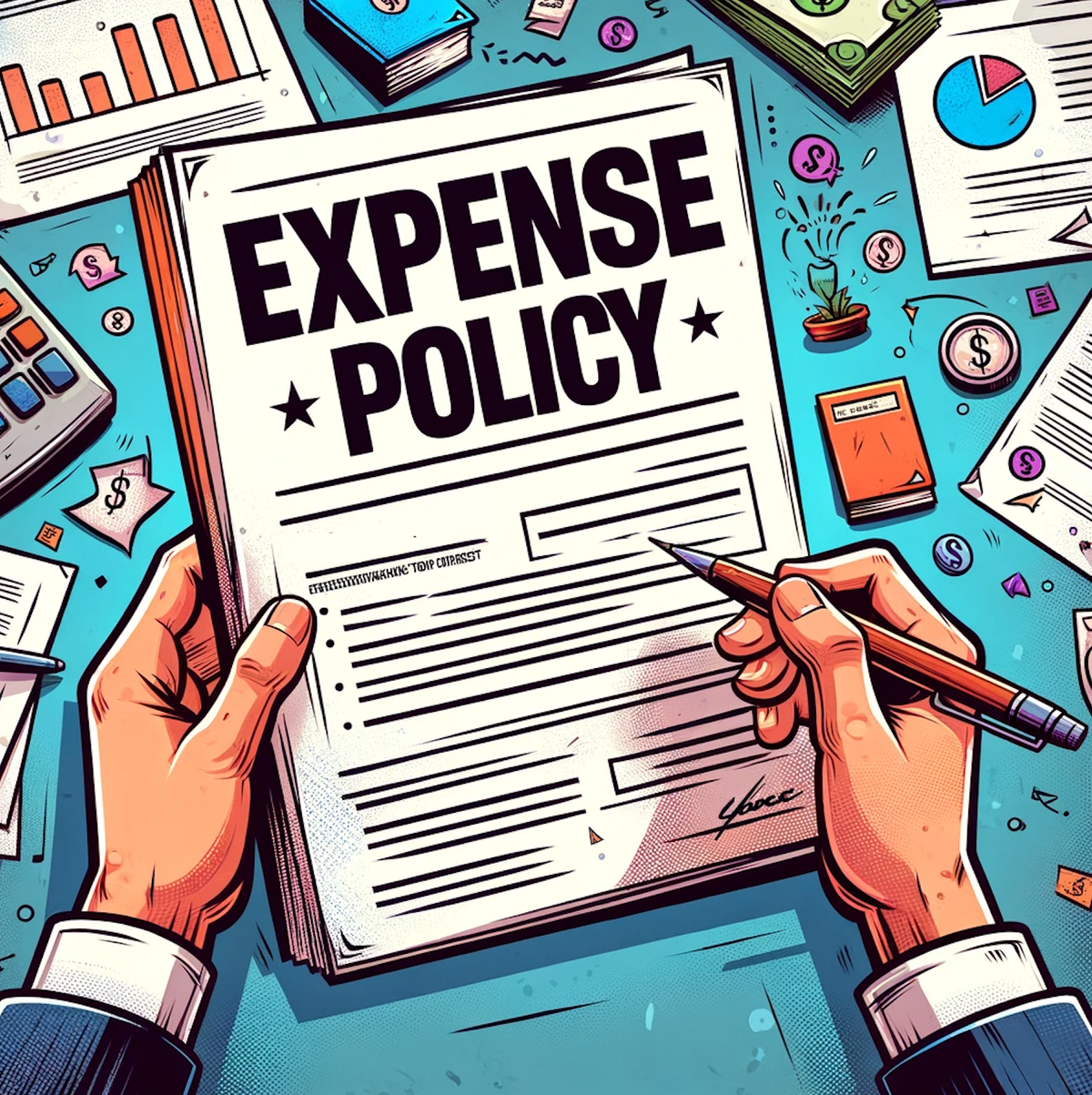
With procurement automation software like Nanonets, you can also ensure purchase requisitions are only approved or rejected based on the conditions set in your expense policy.

4. Risk Management
Risk management involves the practice of identifying, analyzing, and addressing the risks that may arise from dealing with suppliers.
These risks can range from data breaches and operational failures to natural disasters and geopolitical issues, all of which can disrupt your procurement activities and impact your company.
The importance of SRM has been highlighted by recent global events such as the COVID-19 pandemic, geopolitical conflicts like the war in Ukraine, and natural disasters exacerbated by climate change.
These events have shown that while just-in-time supply chains and global outsourcing can reduce costs and increase efficiency, they also expose supply chains to significant risks.
Types of Supplier Risks
- Cybersecurity Risks: Cyber incidents such as data breaches, can jeopardize entire supply chains. For example, the SolarWinds attack highlighted the vulnerability of supply chains to sophisticated cyber-attacks.
- Compliance Risks
- Business and Financial Risks: Suppliers’ business and financial instability – such as bankruptcy, mergers, acquisitions, and leadership changes can disrupt supplier performance.
- Event Risks: Natural disasters, political instability, and pandemics can cause significant supply chain disruptions.
- Capacity and Performance Risks: Suppliers’ inability to meet demand or perform as agreed can severely impact operations. Monitoring and assessing supplier capacity and performance through KPIs (Key Performance Indicators) is crucial.
How to Implement Supplier Risk Management
- Select a Risk Management Framework: Use established frameworks like NIST or ISO to guide your SRM program, ensuring it aligns with industry standards and best practices.
- Account for Risk in RFx Processes with Pre-Contract Due Diligence: Evaluate new suppliers’ business, financial, and reputational risks before contracting. Use risk intelligence networks to gather comprehensive risk data.
- Centralize Visibility Over Supplier Profiles: Maintain a centralized database of supplier profiles, including risk assessments and performance data, to ensure effective monitoring and management.
- Categorize and Tier Suppliers Based on Inherent Risk: Prioritize resources by categorizing suppliers based on their risk levels. This helps in focusing efforts on high-risk suppliers.
- Conduct Periodic Risk Assessments to Ensure Compliance: Regularly assess critical suppliers to ensure they meet compliance requirements and maintain performance standards.
- Continuously Monitor for New Supplier Risks: Stay vigilant about emerging risks in the economic, geopolitical, and cybersecurity landscapes. Adjust supplier risk scores and take mitigation actions as necessary.
- Ensure Adherence to SLA and Performance Requirements: Use KPIs and automated platforms to monitor supplier performance against SLAs and other contract requirements.
- Protect Against Risks When Supplier Contracts End: Conduct offboarding assessments to validate that all contractual obligations are met and sensitive data is securely handled.
We recommend exploring SRM in detail. As a starting point you can use the comprehensive blog below.
Supplier Risk Management: The Definitive Guide | Prevalent
Supply Risk Management (SRM) involves identifying, analyzing and addressing the risk of data breaches, operational failures, and other business disruptions that could affect the delivery of products and services to an organization.Get started with these best practices for tackling supplier risk at your company.

5. Form Relationships with Key Suppliers
Identify key suppliers that are critical to your operations and have the potential for a deeper partnership.
The goal is to then establish mutual goals, set KPIs based on them, and develop a joint action to improve procurement performance. Both the business and the supplier can achieve significant benefits by doing this.
You can learn about Key Supplier Management in detail by reading the blog below.
What is Key Supplier Management? Complete overview.
Creating a fully integrated operating model with your key suppliers can help reduce risk exposure, improve financial benefits & help drive competitive advantage

Conclusion
Embracing above elements into your procurement strategy only reduces costs and enhances operational efficiency, but also positions the procurement team as a valued business partner. This ultimately leads to driving significant ROI and fostering long-term success for a business’ procurement function.
Implementing these elements into your strategy ensures that your procurement process is effective and forward-thinking.






